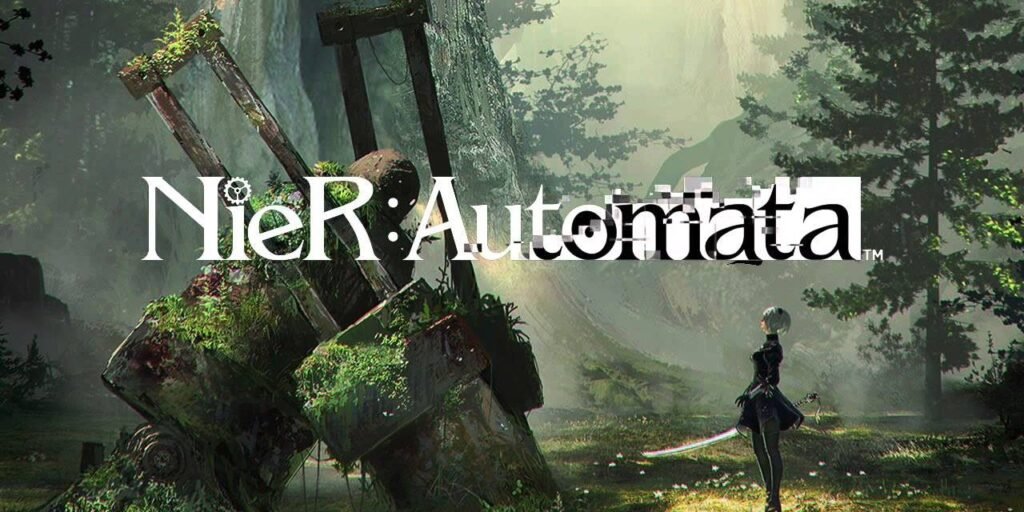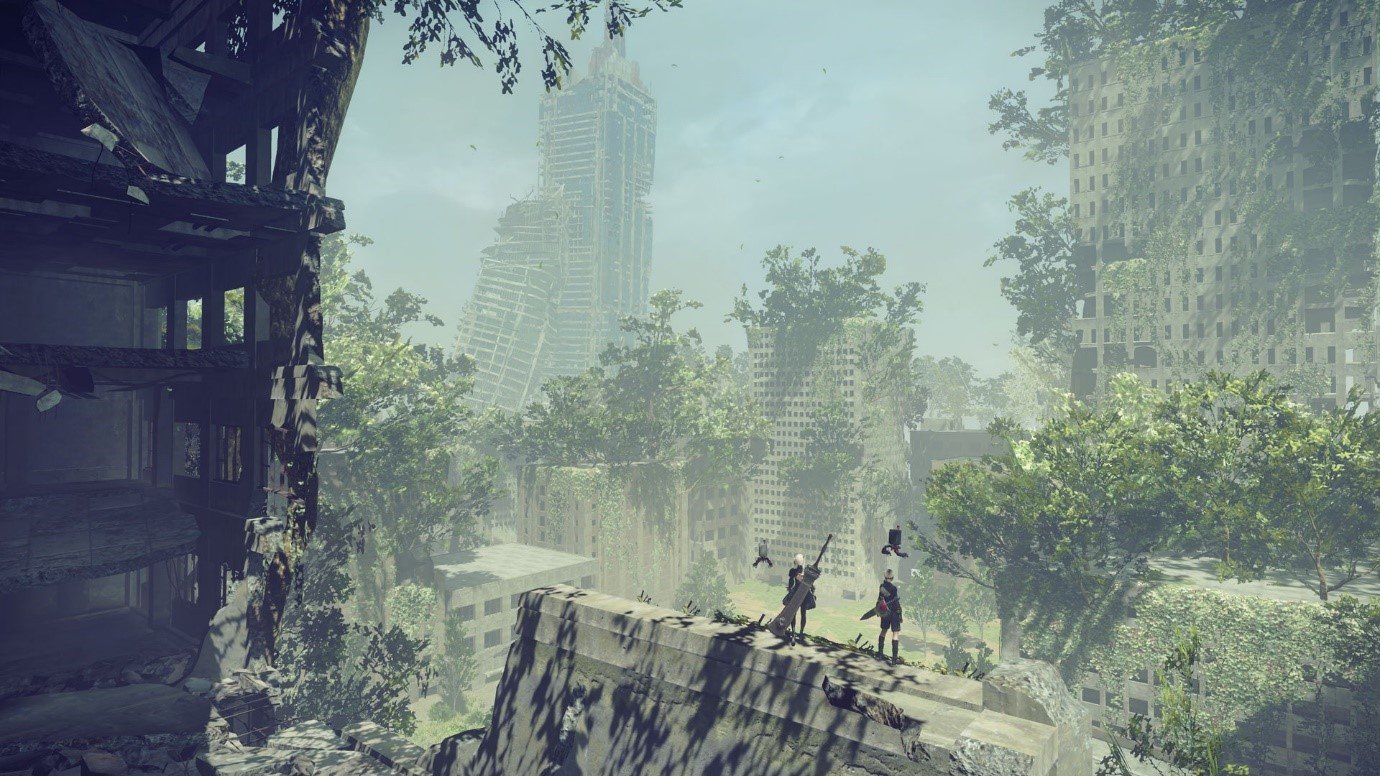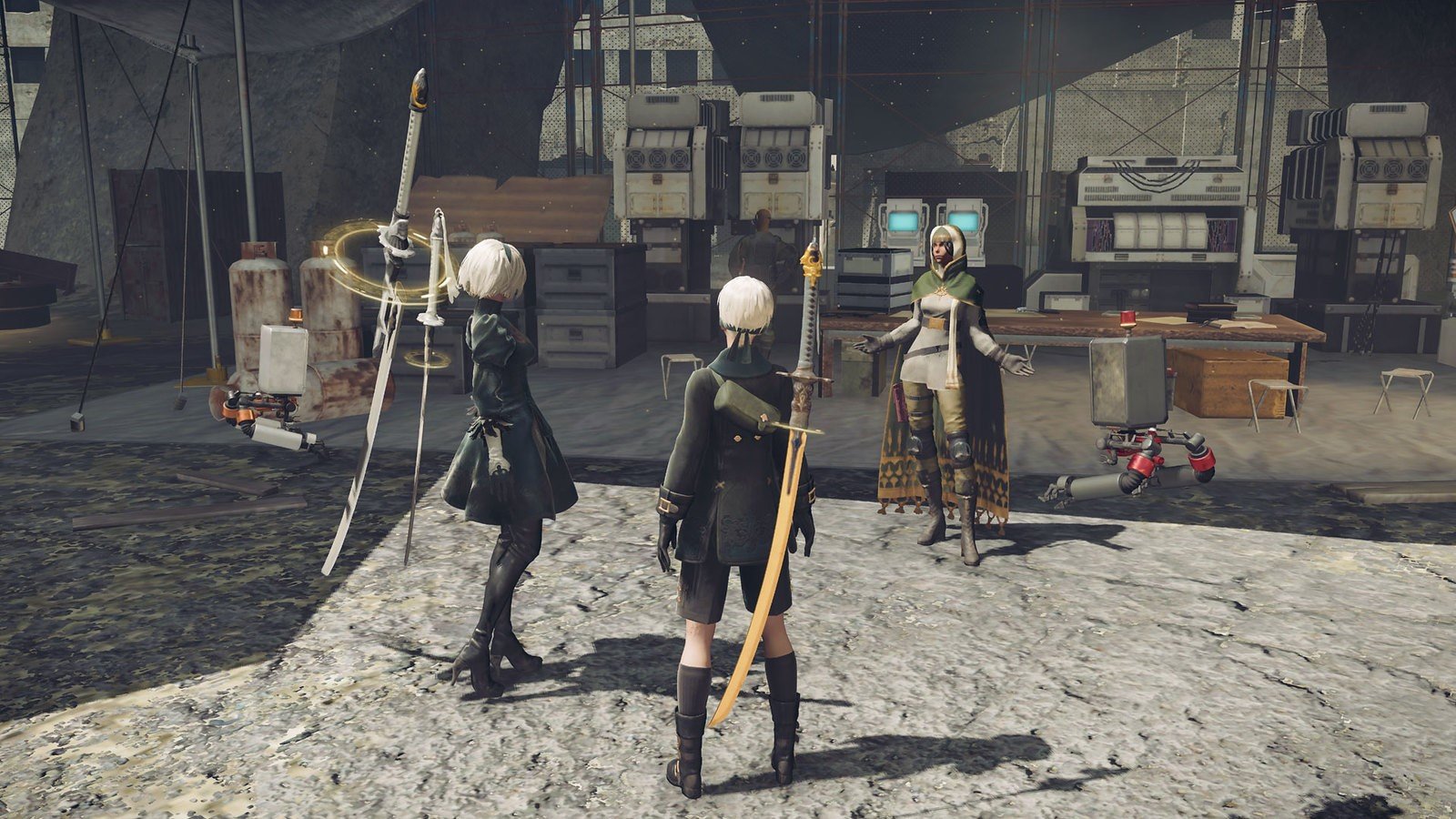It’s always nice to revisit games that make a lasting impression, and not just because of characters who are as stunningly beautiful as the iconic 2B, but also because of a story which never stops to tug on your heartstrings by demonstrating honest humanity, without a single human in sight.
Introduction
Born from the unlikely alliance of JRPG veteran Square-Enix and spectacle-action-game master Platinum Games, NieR: Automata brings the best of both genres together while also adding a whole lot more into the mix.
A sequel to NieR was unexpected, to begin with, but to have Platinum Games on board to handle much of the development was doubly so. It was an oddly ingenious match since director Yoko Taro’s gameplay systems in the Drakengard series or the original NieR had left room for improvement, but the tales in his works are still among the strangest and the strongest in the business.
Story
History has not been kind following the ever-expanding and ever-branching timelines of NieR and the Drakengard trilogy. With magic proving surprisingly detrimental to mankind’s survival, it, alongside the last remnants of self-serving divinity (Drakengard 3) has long since disappeared from the world, leaving the struggling remnants of humanity to fend for themselves.
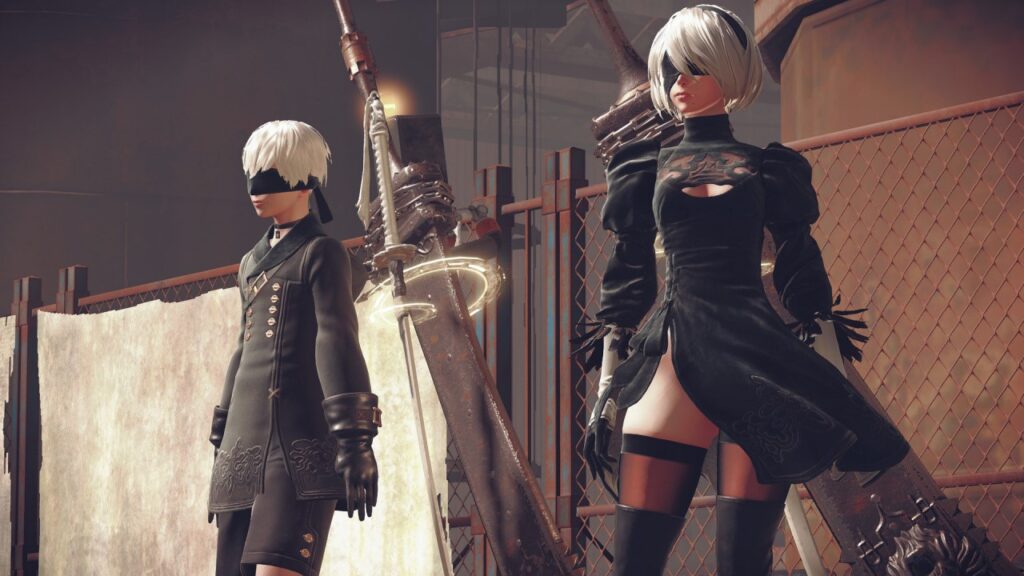
With humanity delaying its inevitable extinction for millennia thanks to scientific advances in cloning (NieR), the last few humans have encountered a hostile alien threat and instead chosen to seek sanctuary on the moon. Earth, however, is not entirely abandoned, as a battalion of advanced androids known as YoRHa fight to retake the earth from the Machines left behind by the aliens who have curiously vanished.
The story of NieR: Automata is told across multiple playthroughs and alternating character perspectives. The first and second playthroughs follow the respective viewpoints of Androids 2B and 9S during the latest Android strikes against the Machines.
2B and 9S are sent to destroy Machine threats against Resistance forces; allied androids attempting to live as human-like societies. During their missions, the pair discover that the Machines have begun to evolve much like the androids did previously, developing emotions such as love, passion, attraction, and self-preservation, meaning the androids and the Machines aren’t nearly as different as first thought.
Gameplay
NieR: Automata is an action role-playing game in which players explore a mostly open world. In addition to standard navigation on foot, the game features scenarios with flying mech battles and even wild animals to ride. Non-playable characters found throughout the world offer quest objectives and shops in hub locations sell various items, including consumables that recover health.

Combat uses a real-time action-based hack-and-slash system, using both light and heavy attacks and combining them into different combination attacks. 2B alternates between two equipped weapons while 9S combines light attacks with hacking into enemies, and the final protagonist, A2 can sacrifice health to boost her attack power briefly.
Pressing the light and heavy buttons in different combinations will yield different moves, but at any point in your combo, you can press up on the D-Pad to swap to your second loadout instantly, effectively doubling your already massive move-set. Attacks with different weapon types can also be charged and launched for increased damage.
On top of melee combat, the player is assisted by a flying ‘Pod’ robot, which launches rapidly customizable ranged attacks that are ideal for crowd control. The Pod also has a swappable special weapon, such as a giant laser, though this needs to cool down between shots. The player can also evade incoming attacks, gaining invulnerability or counterattack bonuses based on timing.
Players earn experience points through combat, increasing their health, defense, and attack power. Character customization is handled through attribute-changing items called chips. Chips can add new abilities and grant stat boosts to the player characters. The number of chips that can be installed at any one time is limited to the number of slots a character has. Chips can either be purchased from shops or collected from defeated enemies.
If the player character dies, they respawn at their previous save point. The player character can then find their original body and either attempt to repair it or retrieve items and experience from it to gain a bonus. If the repair attempt is successful, the body is resurrected as a temporary ally, but if the attempt is unsuccessful, it becomes an enemy the player can fight. With online features enabled, the bodies of other players can also be retrieved or revived where they died.
At certain points, the gameplay changes as an homage to different video game genres, such as shoot-’em-up and text adventure segments. Many of these are indicated by a shift from the normal third-person perspective to a top-down or side-scrolling view. Some areas also include platforming elements, requiring the player to jump between platforms or over obstacles.
Whilst the gameplay shifts do happen quite frequently, they’re usually only for brief sections that break up the action, bringing spontaneous gameplay surprises. One I didn’t enjoy was a survival mission in the latter half of the game, which featured a staggering and unexpected difficulty spike that required a number of attempts to clear in an otherwise straightforward game.
Graphics/Sound
The visuals really deserve your special attention. The level of detail is astounding, from burst pipes causing the flooded floors of crumbling buildings, causing sporadic waterfalls to leak from broken windows to layers of rust on metallic surfaces, which vary in density from object to object.
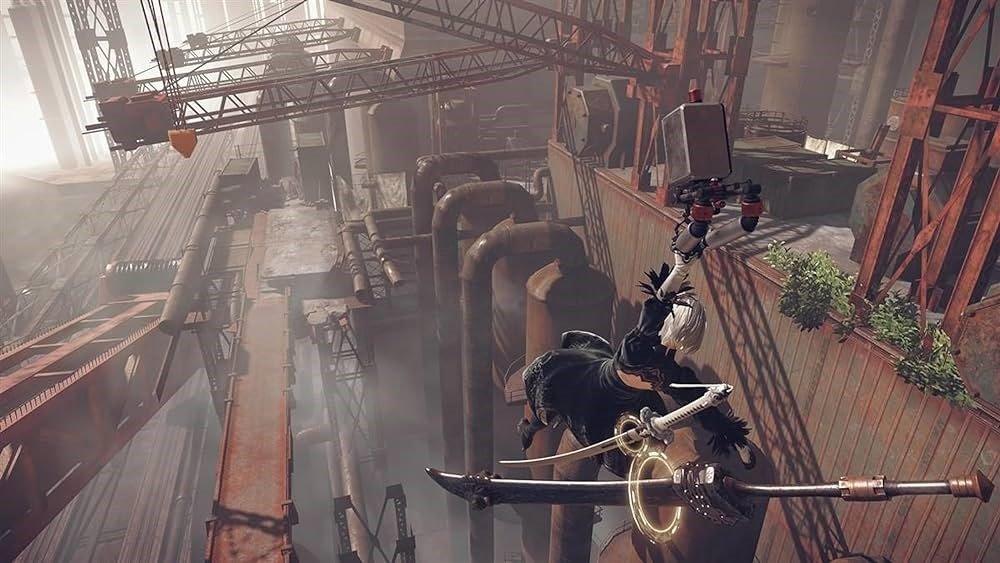
You’ll be exploring a relatively small but open world, complete with the city hub area, a desert, a forest, a flooded zone, and the iconic amusement park. Initially, some locations may seem dull and grey, but as you play, you’ll discover a lot of beauty in them, emphasized by drastic environmental changes throughout the story.
NieR: Automata does have a dusty, coppery tint to it, but that only makes the rare splashes of color stand out more. It emphasizes how the world died long ago, but nature is still struggling to return. To complement this, the main characters all dress in black and white. Even YoRHa’s base, The Bunker, is entirely presented through a monochrome filter.
You’ve probably already heard plenty of praise for NieR: Automata’s soundtrack. It deserves all of that and more. It’s incredibly varied, and most songs have multiple versions to match whatever’s happening on screen. This even extends to the intensity of the vocals.
Replayability
NieR: Automata has 26 different endings: five main scenarios with endings lettered A to E, and 21 additional endings lettered F through Z. These additional endings, which act as game-over events, are triggered by performing specific actions, failing to progress the narrative, or losing certain battles. They aren’t mandatory, existing more for completionists who enjoy exploring the NieR/Drakengard multiverse canon.
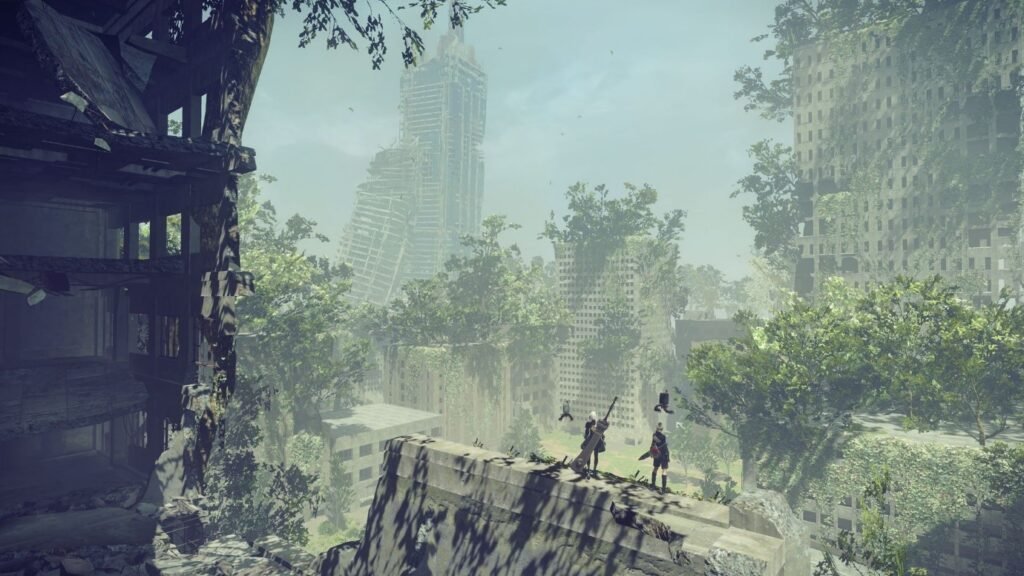
Trophy hunters will find an unusual mechanic included, which will allow them to unlock every trophy using only the A through E ending routes. Simply loading up the post-game and visiting a vendor at the Resistance camp will allow players to purchase any missed or outstanding trophies using in-game currency, which can massively cut down your workload and optional playtime.
Conclusion
NieR: Automata is an original masterpiece in storytelling, placing the player in the role of a non-human protagonists with very human emotions. In doing so, it really highlights humanity’s flaws, which are so commonplace and, therefore easy to overlook until you get to witness such sentience as an outsider.
2B tries hard to hide her emotions and humanity, attempting to be cold and logical but eventually slipping up, showing signs of regret, remorse, vanity, and even love. 9S is easier to read, with the pair’s blindfolds ultimately failing to conceal his lustful glances at 2B and his desire to impress and be accepted by her.
It is an incredibly thoughtful work of art that will stick with you for years to come, supplemented by stylish gameplay, interesting characters, and a fascinating post-apocalyptic world. It’s not traditional by any means, requiring you to play through at least five scenarios to reach the actual conclusion. Nevertheless, NieR: Automata is one of the best games ever made. It plays by its own rules and is all the more original because of it. It’s a genuine masterpiece.
Joys
- Fantastic story
- Impressive atmosphere
- 2B is just beautiful
Cons
- Gameplay style-shifts may confuse some players
- A difficulty spike later on
